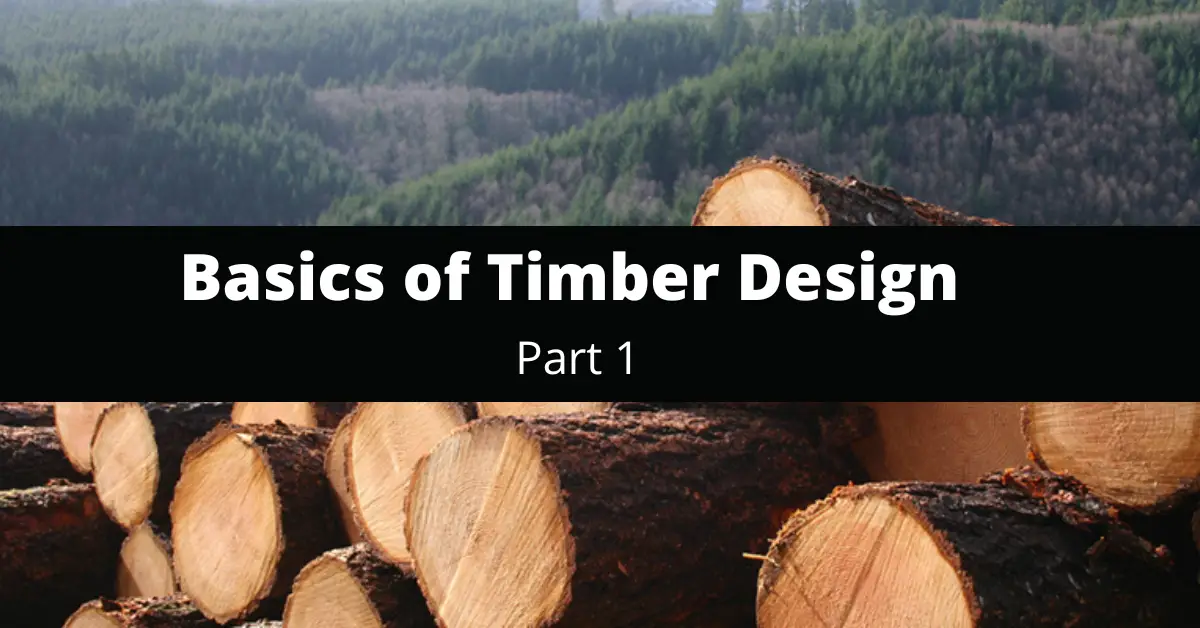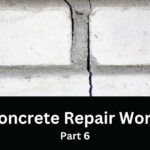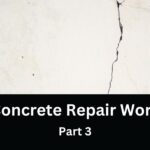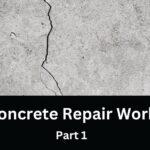When doing construction work, it is absolutely necessary to select timber of a high quality.
Table of Contents
What is timber?
Timber is a composite material which basically consists of Cellulose fibres and Lignin matrix.
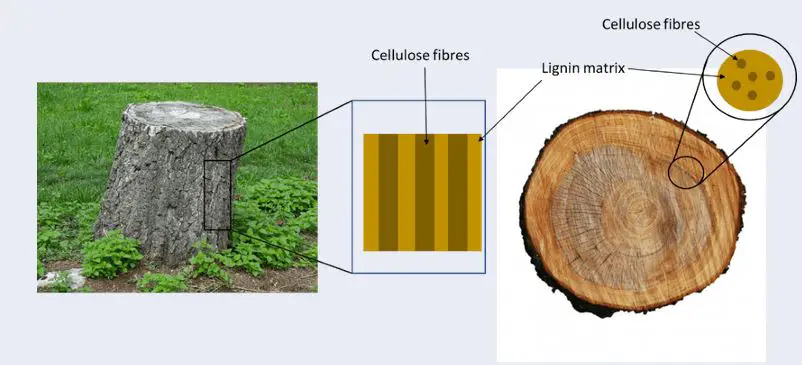
Timber cannot be combined into a predetermined formula, unlike other building materials. The cut wood needs to be visually or mechanically inspected and graded.
Tree types
Trees are classified into two categories based on their cell structure.
- Softwoods (Coniferous trees)
Softwood is a flexible wood that provides a beautiful, smooth finish. Softwood is produced by gymnosperm trees, which lack pores and rely on medullary rays and tracheids to carry water and create sap. Softwood has a reduced density as a result of this property.
Examples of Softwood
- Cedar
- Douglas fir
- Pine
- Hemlock
Characteristics of softwood
Softwood is less difficult to deal with and can be used in a variety of applications.
Softwood trees grow much faster than hardwood trees and are considered a highly sustainable resource.
Because these types of timber are easier to obtain, they are less expensive.
Softwood timber has a lower density, which makes it weaker and less durable, but there are some ‘hard’ softwood choices with a higher density, such as Juniper and Yew.
Softwood is less suitable for high traffic areas since it does not wear as well as hardwood over time.
Unless treated, softwoods have poor fire resistance.
Uses of Softwood
Softwood wood is most often used for feature walls, ceilings, furniture, doors, and windows.
It is a versatile building material with a great finish that can be used to produce magnificent elements for home and commercial construction projects.
- Hardwoods (Broad leaved trees)
Authentic hardwood timber is recognized for its unparalleled aesthetic and functionality. Angiosperm trees produce hardwood, which contains components that transmit water and nutrients throughout the wood. All distribution is handled by the pores in the wood grain, which permits the remaining wood grain to become denser.
Examples of Hardwood
- Eucalyptus
- Balsa
- Mahogany
- Blackbutt
- Spotted Gum
Characteristics of Hardwood
- Hardwood generates very high-quality products with exceptional durability over time.
- Hardwood flooring is simple to clean, and scratches and dents may be repaired.
- The deep cellular structure of the trees provides the wood with tremendous strength.
- Hardwood flooring is available in a variety of colors and treatments, making it suitable for practically any contemporary setting.
- The fire resistance of hardwood timber is superior to that of softwood.
- As a result of their slower growth rate, it takes longer to replace hardwood forests.
- In construction, hardwood is typically much more difficult to deal with because of its density.
- In general, hardwoods are more expensive than softwoods, but nonetheless, you get what you pay for.
- Hardwood flooring in high-traffic areas may eventually require refinishing, which can be extremely expensive.
Uses of Hardwood
The most typical application for hardwood is flooring, although it can also be used for cladding, paneling, buildings, fencing, boats, and outdoor decks. It is suitable for home and commercial uses and can be utilized indoors or outdoors. When durability and strength are of the utmost significance, hardwood is utilized.
Softwood vs. Hardwood
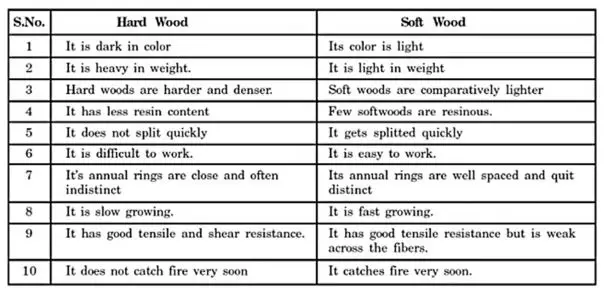
Wood types
- Sapwood
When a tree is young, certain wood cells are alive and capable of transporting sap or storing nutrients; this wood is known as sapwood. The sapwood is also known as Alebernum.
- Heartwood
Duramen is another name for heartwood. The core of a tree’s wood, or central wood, is dead. As fresh sapwood is generated beneath the bark, the inner sapwood becomes heartwood. Living cells die in wood undergoing this transformation.
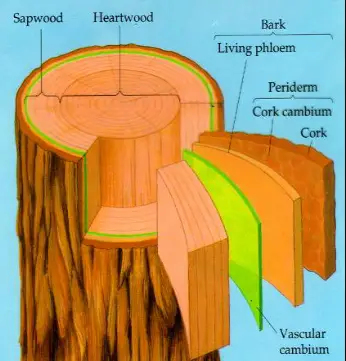
Further reading on sapwood and heartwood can be found here.
Growth rings
In a cross-section of the stem of a woody plant, a growth ring represents the increment of wood produced during a single growth period. In temperate regions, the typical growth time is one year; in this case, the growth ring is known as an “annual ring.” In tropical climates, yearly or imperceptible growth rings are possible. Even in temperate locations, growth rings are sometimes absent, and a second, or “false,” ring may be created in a single year, as a result of insect defoliation, for example.
If conducting cells formed early in the growth phase are larger (spring, or early, wood) than those produced later (summer, or late, wood), or if growth is ended by a layer of relatively thick-walled fibres or parenchyma, then growth rings can be distinguished. In temperate or cold areas, the age of a tree can be established by counting the annual rings at the base of the trunk or, if the trunk is hollow, at the base of a big root. Annual rings have been used to date ancient wooden constructions, particularly those of American Indians in the arid southwestern United States; variations in ring width provide information about ancient climates.
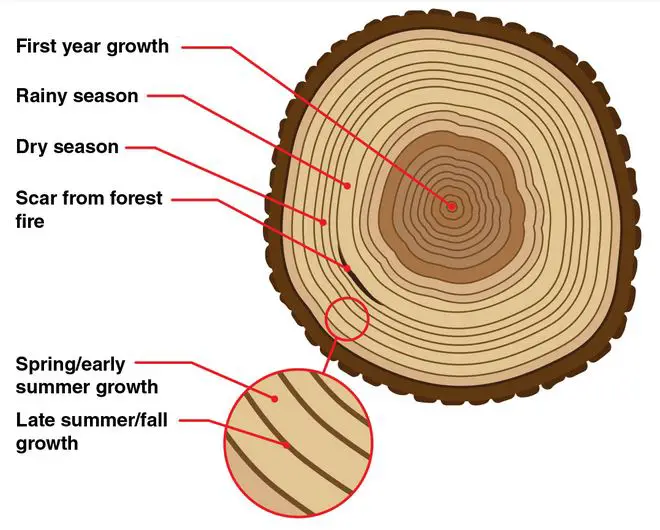
Main orthotropic directions and planes in a wood
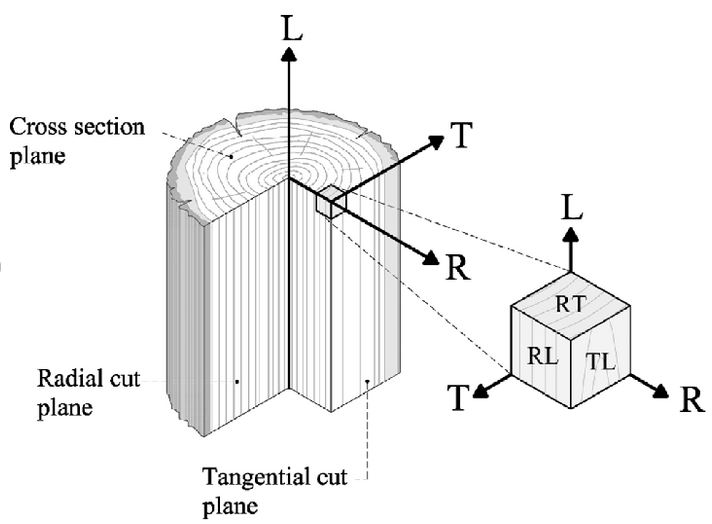
- Direction parallel to grain: Axial or Longitudinal
- Directions perpendicular to grain: Radial and Tangential
Advantages of timber as a construction material
- Renewable resource
- Adaptable and versatile
- Simple to work with the required knowledge.
- Simple tools can be used to create joints.
- It possesses both compression and tension and good strength/weight ratio in both tension and compression.
- Given favorable circumstances, timber is resilient.
- Aesthetically pleasing
- Creates a warm feeling in cold weather and keeps you cool in hot weather.
- Economical when suitable timber is available.
- Carbon neutral material and can even trap Carbon.
- Low energy input for production
Disadvantages which can be overcome with good design and relevant technology
- Anisotropic material
- Wide variation in properties
- Fire hazards
- Open to attack by insects and fungus
- Issues in durability
- Sensitive to moisture, i.e., dimensions and strength vary with moisture content. Time dependent deformations, e.g. creep
Relevant design guidelines for timber
- BS EN 1995-1-1: 2004+A2:2014 “Eurocode 5: Design of timber structures – Part 1-1: General – Common rules and rules for buildings”.
- NA to BS EN 1995-1-1: 2004+A1:2008 “UK National Annex to Eurocode 5: …”
Read Also: Basics of Timber Design – Part 2
